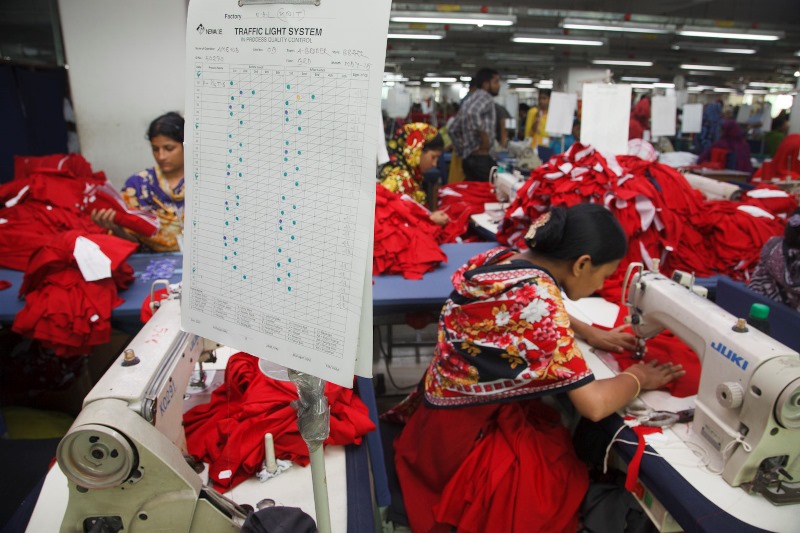In April 2013 Rana Plaza collapsed, a random factory building in Dhaka turned into a name that is engraved in the history of Bangladesh. The day before the disaster it was clear that something was wrong because cracks appeared in the walls. That is why the shops on the ground floor had already closed their doors. Why did the employees of the garment factories still come to work? It looks like they were forced by their boss, but can you impose that on thousands of people who really don’t want to go in? Probably they were also forced by their own finances: no work means no money and if I get fired I’ll be easily replaced. A precarious position, which proved deadly for more than 1,000 people. The site of the disaster is now a gaping hole between two other buildings. There is a monument erected by a leftist group. The hammer and sickle appear a little too political, but at the same time the clenched fists powerfully express the anger.
The garment industry in Bangladesh is enormous and will grow even bigger in the coming years. Most of the production is for export. The main competitive advantage of the country is the low minimum wage. This allows factories to let people (mostly women) work for a slave wage, while sticking to the rules. This cannot be blamed on individual factory managers; they are in the middle of the system in which the major Western brands require ever cheaper production. Meanwhile, Human Rights Watch is not happy.
Of course, after Rana Plaza the brands had to do something to save what was left of their image. This resulted in factory audits to check if owners abided by the rules; especially regarding the safety of the building and workplaces. But the inspections also check whether the employees can have a voice, for example because there is a trade union.

In Bangladesh, trade unions have a bad name because they are almost always politicized. The leaders are not too bothered by the members and play their corrupt games with the government to stay in power. When Western organizations come up with “this factory should have a trade union”, you start off with a communication problem.
But there is a deeper feeling behind this: mistrust from the management towards the employees. This is not without reason; I think people will have little loyalty for a company that only gives them the minimum. It shows in the high turnover of employees. That’s one of the things that the projects we looked at are trying to work on. For example, the factory in the pictures started doing exit interviews for people who want to leave. In that way it becomes clear what their reasons are, and sometimes the situation is improved so that they stay after all.

We did not come to inspect the factories, but to do an evaluation of the training that the managers had received. The first association I had when we entered, was actually my own experience in the boxes factory. The efficiency of the process has a kind of beauty, where you see a piece of cloth transformed into a packed t‑shirt with a price tag in no time. But the tasks of an individual are so limited that as an employee you are not more than a machine. It is literally mind-numbing, see Marx’s quote above.
In these two weeks I have mostly seen positive things, and young managers who know that a good relationship with their employees is also good for business. Meanwhile, it is also clear that the thousands of people who put our clothes together don’t have an easy life. I think it is hypocritical to blame the factory owners in Bangladesh for this situation. Ultimately, consumers want cheap clothes, and the Western brands want to pocket the profit. Another piece of work of the runaway capitalist machine…
The pictures from the factory are made by Abu Ala Hasan, the consultant that I worked with.




